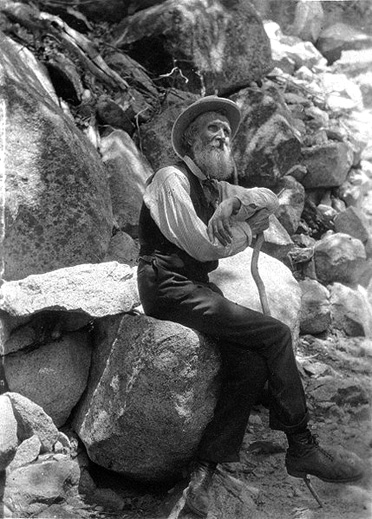
April 21 is John Muir’s birthdate in 1838 at Dunbar, Scotland. Muir emigrated to the United States in 1849, and was educated at the University of Wisconsin, 1859-63. He traipsed through a number of Midwestern states studying botanical specimens, and shortly after the end of the Civil War walked from Indianapolis to California, keeping a diary of his observations and thoughts.
He is best known for his sojourn in Yosemite Valley from 1868 to 1874. As a naturalist, explorer and conservationist he also visited Nevada, Utah, and Alaska. For a decade, 1881-91, he settled on a fruit farm near Martinez, Calif.
At his urging, Congress established Yosemite National Park in October 1890. He subsequently campaigned to save America’s forest reserves and became friends with President Theodore Roosevelt, who set aside 148 million acres of additional forest land for preservation.
Muir wrote several books. The Sierra Club website provides the complete text of each book in HTML, organized by chapter, usually with the original illustrations. that are available in printed and digital editions.
John Muir co-founded the Sierra Club with Professor Henry Senger, a philologist at the University of California, Berkeley, in 1892, now the nation’s largest and most influential grassroots environmental organization, with more than two million members and supporters. The Sierra Club has succeeded in protecting millions of acres of wilderness, and has helped to pass the Clean Air Act, Clean Water Act, and Endangered Species Act. The Sierra Club is one of the nation’s leading forces in trying to move away from the dirty fossil fuels that cause climate disruption and toward a clean energy economy.
Muir died in Los Angeles on December 24, 1914. The 550-acre Muir Woods National Monument, near San Francisco, is named for him.
In Alaska, on July 18, 1890, he wrote these poetic words:
“How hard to realize that every camp of men or beast has this glorious starry firmament for a roof! In such places standing alone on the mountaintops it is easy to realize that whatever special nests we make – leaves and moss like the marmots and birds, or tents or piled stone – we all dwell in a house of one room – the world with the firmament for its roof – and are sailing the celestial spaces without leaving any track.”
Photo: Wikimedia Commons, public domain.










